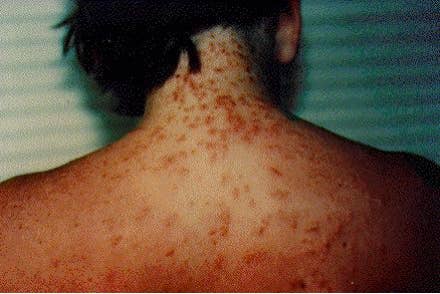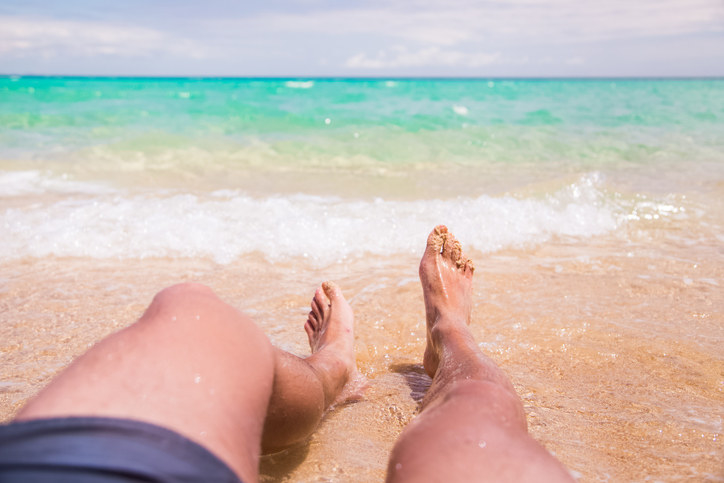On Tuesday, lifeguards at Pensacola Beach in Florida posted flags to warn beachgoers of an outbreak of stinging sea lice.

Most people go to the beach to enjoy the ocean and get some sun, not to get a stinging, itchy rash. Beachgoers in Florida are now on high alert after authorities confirmed an outbreak of sea lice, irritating creatures that cause a nasty skin rash. Lifeguards at Pensacola Beach, located in the northwest part of Florida, set up purple warning flags along the beach to signal the presence of sea lice in the water.
Dave Greenwood, director of public safety for Pensacola Beach, told the Pensacola News Journal that sea lice aren't very intense and that they are common during the summer months. "It's just one of those you have to deal with when you go into the Gulf of Mexico. You are a land animal and the Gulf is not our native environment," Greenwood said.
So what are these pesky little ocean critters and why do they make us so itchy?
Sea lice aren't actually "lice." They are microscopic thimble jellyfish larvae that float in the ocean and cause a red, itchy rash on the skin.

The jellyfish larvae are about the size of a pinhead and float on the surface of ocean waters. They have caused outbreaks for decades in South Florida and the Caribbean, according to a report from the Florida Department of Health. The larvae — not the adult thimble jellyfish — are responsible for causing a skin rash, which is also called "seabather's eruption" or "swimmer's itch."
Pressure and friction can trigger the larvae to "fire off" and sting. They typically cause reactions in body creases or underneath swimsuits or swim caps pressing down on the skin. Certain activities may increase the amount of stinging from sea lice, such as lying down on a surfboard or boogie board, hanging out on the sand, or wearing your wet bathing suit for hours after you leave the beach.
The rash is a form of dermatitis or skin inflammation caused by a hypersensitivity reaction to the larvae cells. The skin becomes itchy, irritated, and covered in small red bumps or welts. It can take anywhere from 4 to 24 hours for the reaction to become noticeable after exposure, but the itching can last for up to two weeks, the report states. Treatment includes over-the-counter antihistamines and cortisone cream.
Sometimes people may develop more severe symptoms from sea lice exposure such as nausea, vomiting, headaches, and muscle spasms. If you experience any of these, you should consult with your doctor. If your child experiences these symptoms, you should bring them to a pediatrician immediately.
The rash usually isn't serious, but it can be super annoying. You can prevent sea lice by taking a few simple precautions at the beach.

Sea lice are almost invisible to the naked eye in the moving ocean water, so they are often difficult to avoid. If there are warning signs or flags indicating that sea lice are present, do not go in the water, especially if you've had severe reactions to sea lice in the past, according to the Florida Department of Health.
These annoying critters can only survive in warm saltwater and do not stay on swimmers' bodies after they get out of the ocean. However, they can get trapped under wet fabric against the skin and can keep stinging repeatedly. If you are swimming in an area where there is a sea lice outbreak, don't wear a T-shirt in the water and use sunscreen for protection.
After swimming, you should change out of your wet swimsuit and shower off with fresh, clean water as soon as possible. Launder and heat-dry your swimsuits after wearing them in the ocean.
